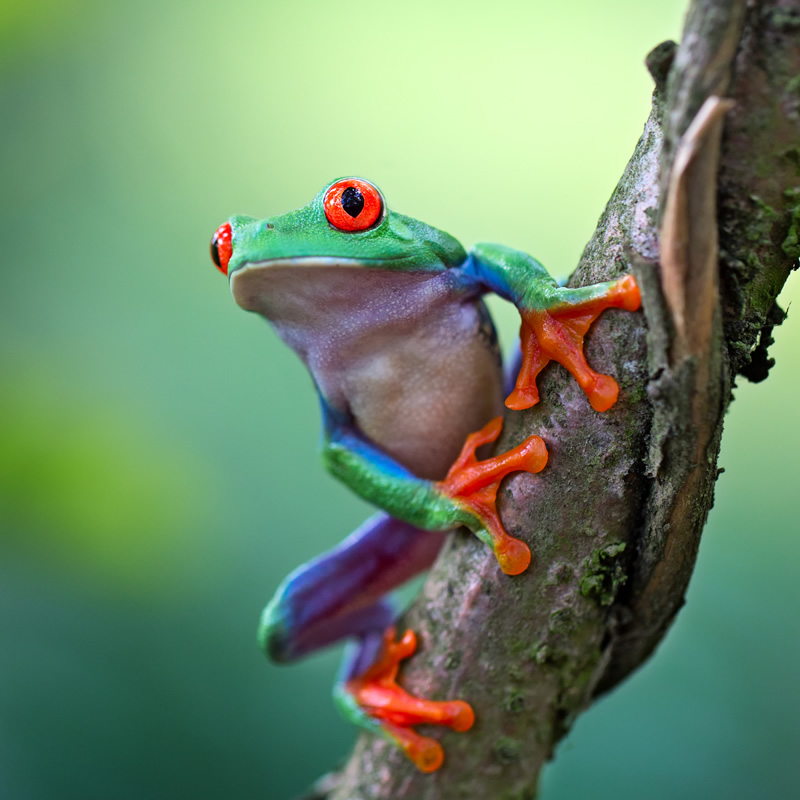
Scientific Name
Agalychnis calidryas
Classification
| Kingdom | Animalia |
| Phylum | Chordata |
| Class | Amphibia |
| Order | Anura |
| Family | Hylidae |
| Genus | Agalychnis |
| Species | calidryas |
IUCN Redlist Status

Location
Red-eyed tree frogs can be found in the southern Mexico and Central America regions, including but not limited to Costa Rica, Honduras, Panama, and northern South America.
Habitat
These colorful frogs make their home in lowland rainforest areas near ponds, streams and rivers. They will be found near water sources that their young, called tadpoles, will need to survive.
Diet
Red-eyed tree frogs are carnivorous. Their diet consists of a wide variety of insects, which they catch with their long and sticky tongues. They also sometimes eat other small vertebrates, including other frogs.
Size
Red-eyed tree frogs will grow to be 2 - 4 centimeters in length.
Description
While the majority of their body is a bright shade of green, these frogs are well known for their bulging red eyes, beautiful blue streaks and large orange toes.
Adaptations
A red-eyed tree frog’s most notable adaptation is its beautiful coloration. These frogs are nocturnal and will spend most of their days camouflaged on the underside of a leaf. While sleeping, the frog will hide its bright colors by closing its eyes and tucking its feet beneath its body. If startled by a predator, the sudden appearance of these colors may confuse or disinterest the predator. Like many tree frogs, red-eyed tree frogs have suction cups on their toes that enable it to climb trees and on leaves.
Reproduction
Red-eyed tree frogs will lay clutches of eggs on the underside of leaves that are standing above a water source. Mating is often a highly competitive event for the males. Sometimes more than one male will cling to a single female while she searches for a suitable place to lay her eggs. Then the males attempt to fertilize the eggs. When the eggs hatch approximately five days later, the fluid that was inside the eggs helps to wash the tadpoles down into the water. Tadpoles mature rapidly and are ready to leave the water in a day or two.
Other Facts
Red-eyed tree frogs are popular pets. Although they are not considered endangered at this time, they have been trapped extensively for sale in the pet trade. They also face a loss of habitat due to deforestation in their native areas.
